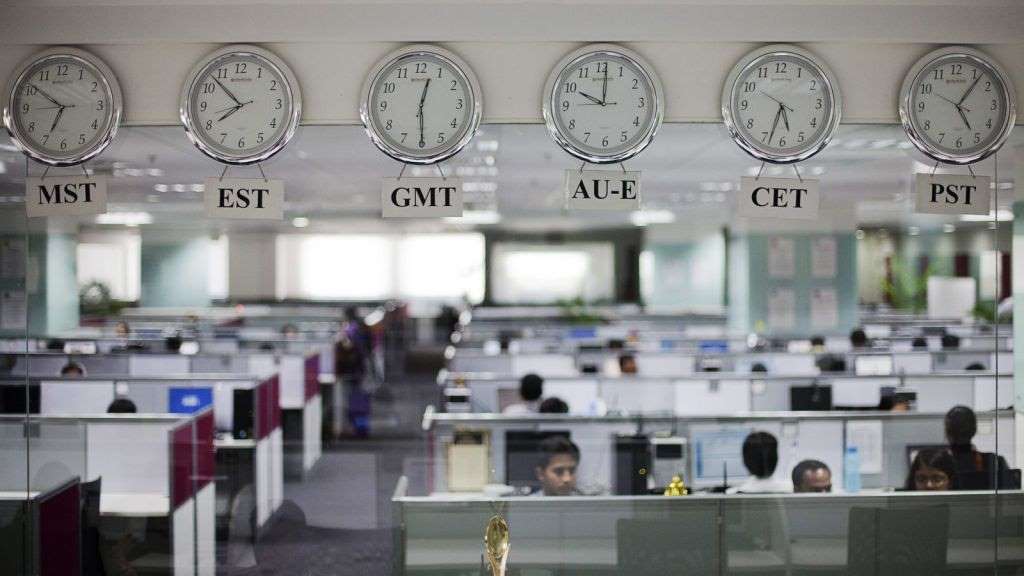January 24, 2016
NEW YORK, USA: Every U.S. recession since World War II has been foretold by sharp declines in industrial production, corporate profits and the stock market.

Those ill omens have aligned again.
January 24, 2016
NEW YORK, USA: Every U.S. recession since World War II has been foretold by sharp declines in industrial production, corporate profits and the stock market.

Those ill omens have aligned again.
Does this portend an economy tilting into recession? Or can the declines in profits and production be explained by the collapse in oil prices, and the plunge in stocks be explained by investors’ overreacting to those dynamics?
The dark clouds first.
Industrial production has declined in 10 of the past 12 months, and is now off nearly 2% from its peak in December 2014. Corporate profits peaked around the summer of 2014 and were off by nearly 5% as of the third quarter of last year, according to the Commerce Department. Stocks have fallen viciously so far this year, with the Dow Jones Industrial Average down 7.6%, despite a rally late last week.
“The economy is like a car with a six-cylinder engine and more and more cylinders are breaking,” said Joseph LaVorgna, chief U.S. economist for Deutsche Bank in New York.
One reason worries for the U.S. are elevated is that so much of the world is beset with low or declining growth. Last week, the International Monetary Fund forecast the eurozone would grow just 1.7% and Japan 1% in 2016.
Growth in the world’s second-largest economy, China, is expected to slow further this year, amid doubts over Beijing’s ability to make the Chinese economy more reliant on domestic consumption and less dependent on debt-fueled infrastructure projects. Russia and Brazil are forecast to contract, the IMF said.
“It is going to be a year of great challenges,” IMF chief economist Maurice Obstfeld said. “Unless the key transitions in the world economy are successfully navigated, global growth could be derailed.”
Of the warning signs, the decline in U.S. industrial production has one of the best track records. The output from mines, factories and utilities has always begun to decline before recession strikes.
“Manufacturing tends to lead the economic cycle and it tends to be an indicator of the swings,” said Thomas Costerg, senior economist at Standard Chartered. “Manufacturing is struggling.”
A strong U.S. dollar and weak economies internationally are taking a toll. But unlike past declines in industrial production, today’s decline has been driven primarily by the collapse in the oil industry. The output from U.S. factories has been little changed over recent months. But mining output has fallen over 10%, driven by a 62% decline in oil- and gas-well drilling.
Corporate profits, too, have been weighed down by the energy industry. An analysis from Goldman Sachs Global Investment Research found that profit margins among the companies in the S&P 500 stock index—if energy companies are excluded—have been little changed over the past year. It is only by including major laggards like Exxon Mobil Corp., Chevron Corp. and Valero Energy Corp. that U.S. corporate profit margins shrink.
If it were just oil companies in decline, the worries would be easier to dismiss, but the falling stock market could unnerve many consumers who hadn’t previously been alarmed. In a recession, falling confidence—which hasn’t shown up so far—typically leads households to pull back on purchases, causing a more widespread decline in company profits and layoffs.
Industrial production, corporate profits and stocks have sounded false warnings before. Industrial production, for instance, declined about as much as today in the mid-1960s and mid-1980s, and those weren’t immediately followed by recessions. And multiple bear markets have come without an economic downturn.
On the bright side, the U.S. job market is perhaps the best recession indicator of all, and it isn’t flashing trouble.
In the past 50 years, every recession has seen the number of jobs in the economy decline by at least 1%. And jobs have never declined by that much outside of a recession.
Today, the number of jobs in the U.S. has been growing briskly—up 292,000 in December and up 2.7 million over the past year. This is why many economists remain confident the U.S. can avoid recession.
“I just don’t buy for a second the idea that U.S. households are so terrified by what’s happening that they’re going to behave like Germans and wean themselves off buying stuff,” said Ian Shepherdson, chief economist at Pantheon Macroeconomics, referencing the high-saving and low-consumption German economy.
Many households have spent the past seven years bracing for tough economic times, paying down debts (or reducing them through foreclosures), and stepping up their saving rates.
“Financially speaking, consumers are collectively in the best shape they’ve been in a decade or more,” said Amy Crews Cutts, chief economist for the credit-reporting firm Equifax.
The ultimate call on whether the U.S. has entered a recession would be made by a group of economists known as the business cycle dating committee at the National Bureau of Economic Research.
The committee studies gross domestic product and income, employment, inflation-adjusted retail sales and industrial production, to determine the timing of when precisely economic activity began to shrink. In the past, they have waited until the turning points are clear and the data has been through revisions. Their views become closely monitored when the economy starts to get wobbly.
For now, it is far too soon for any NBER pronouncement. Asked for his personal assessment, Robert Hall, a Stanford University economist who heads the committee, said, “I’m plenty worried about the world and U.S. economies.”
Courtesy: The Wall Street Journal







































































































